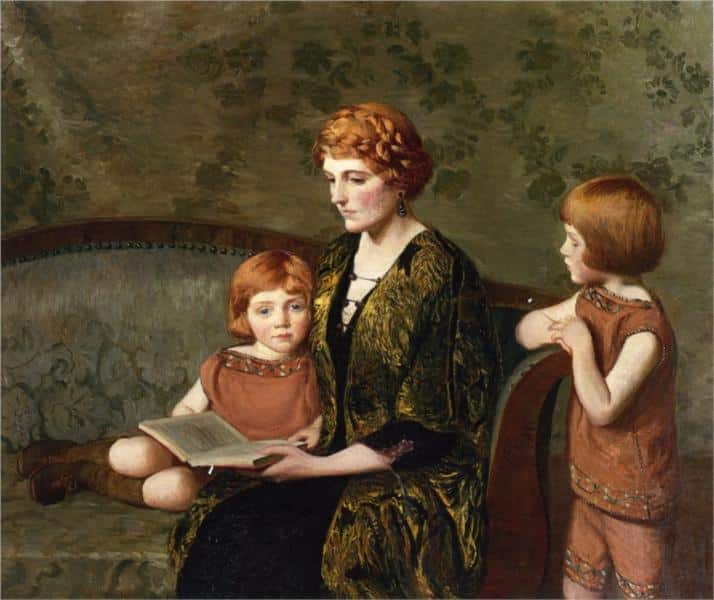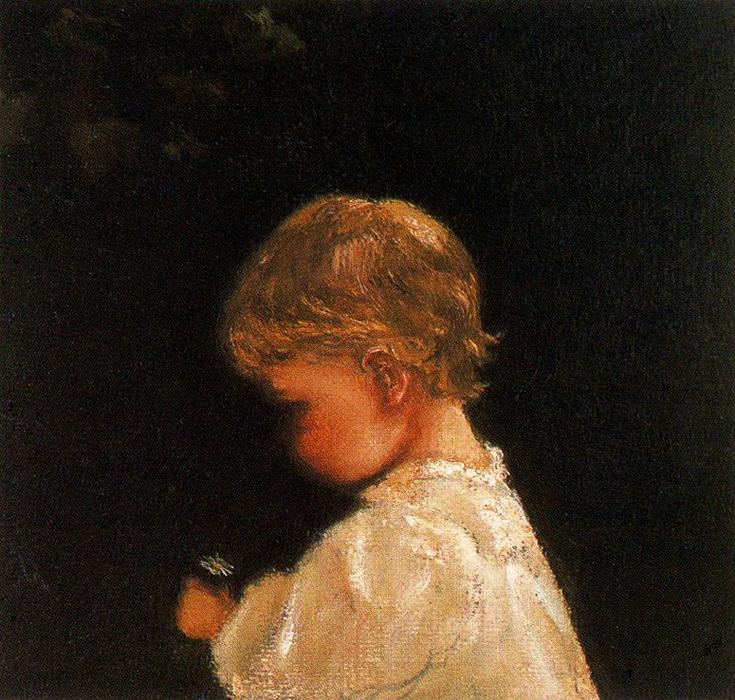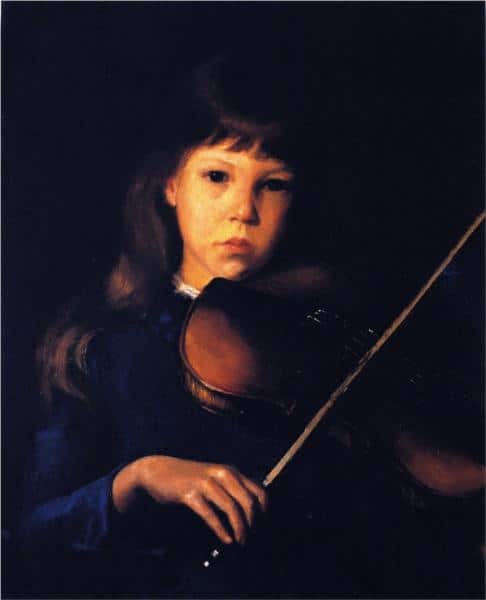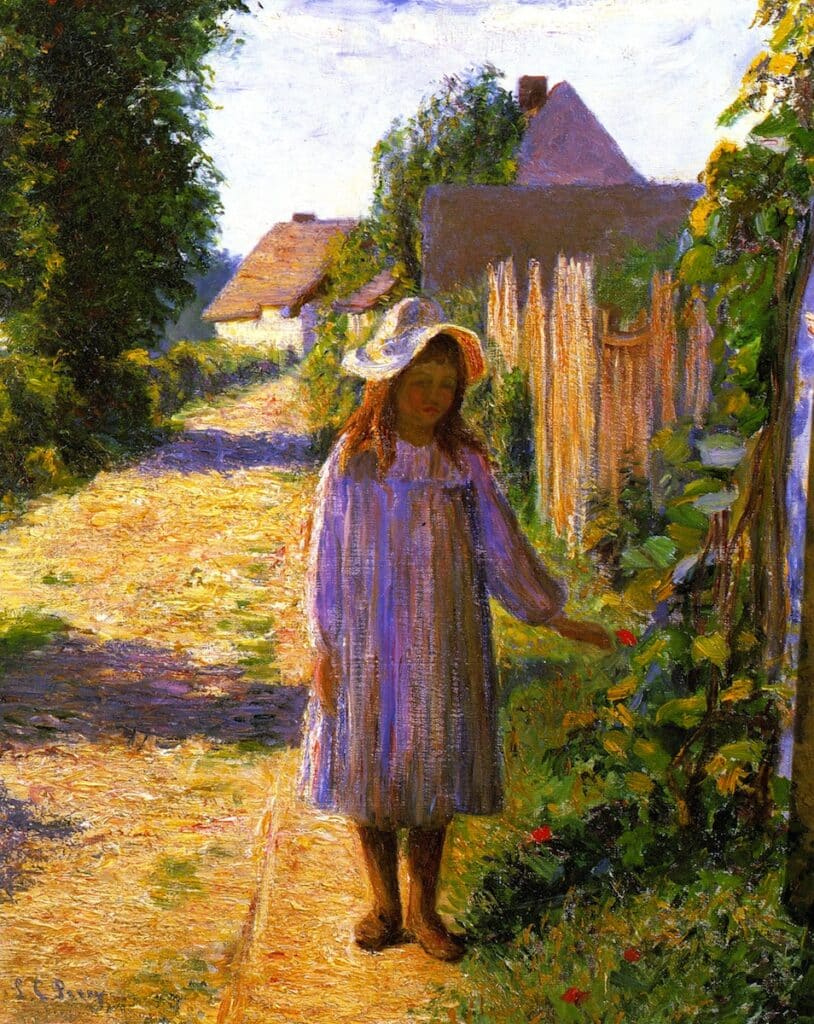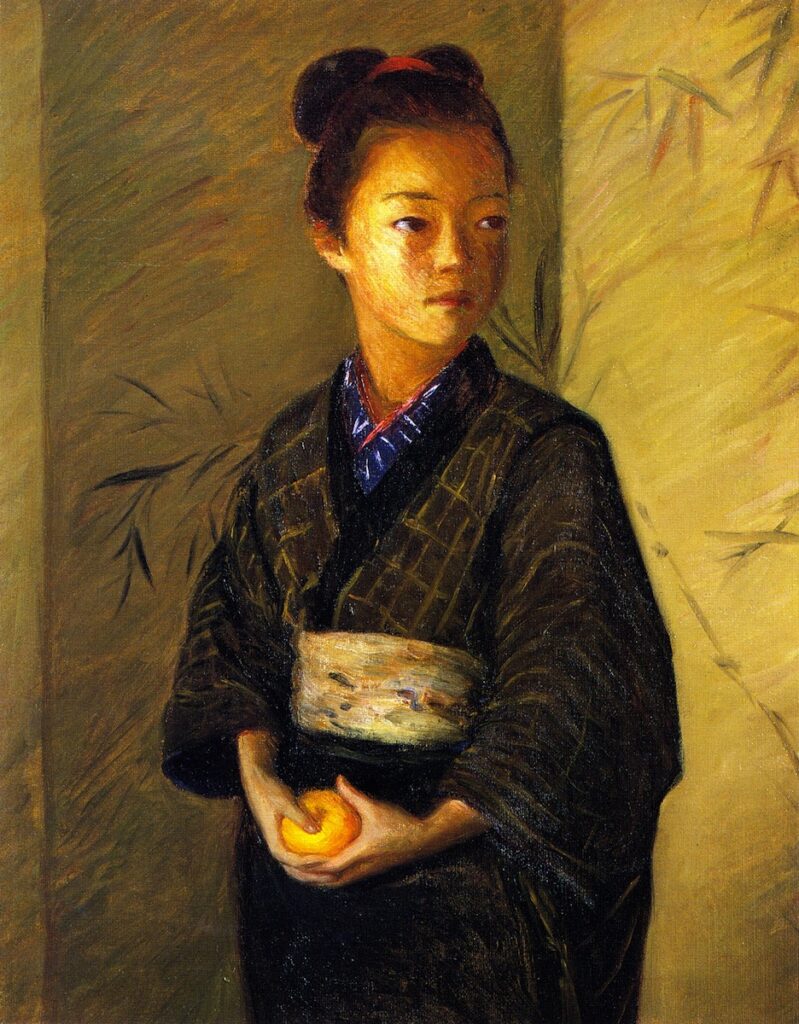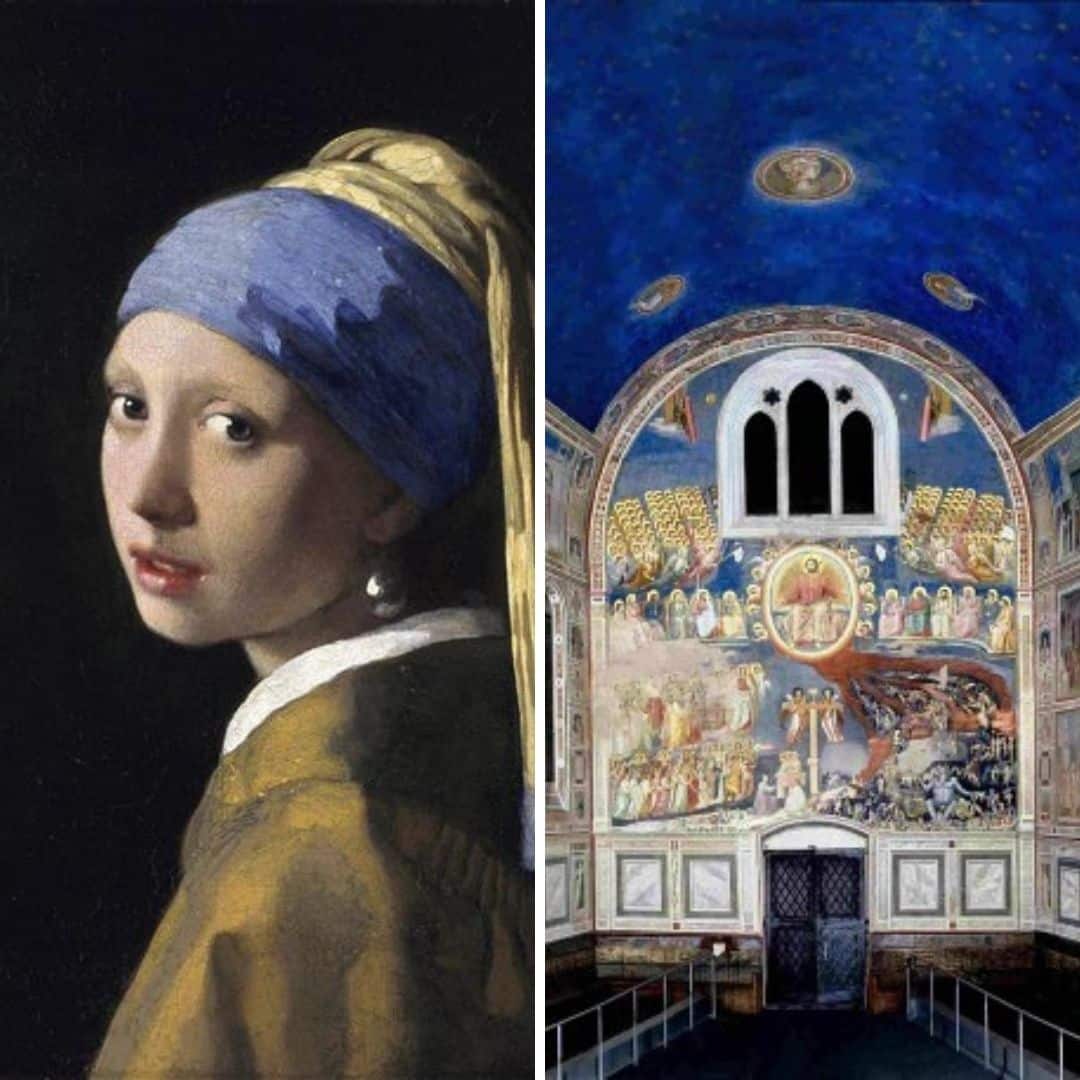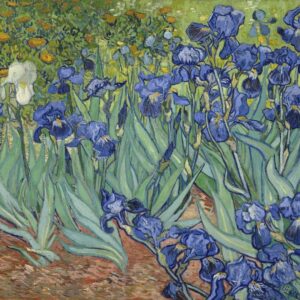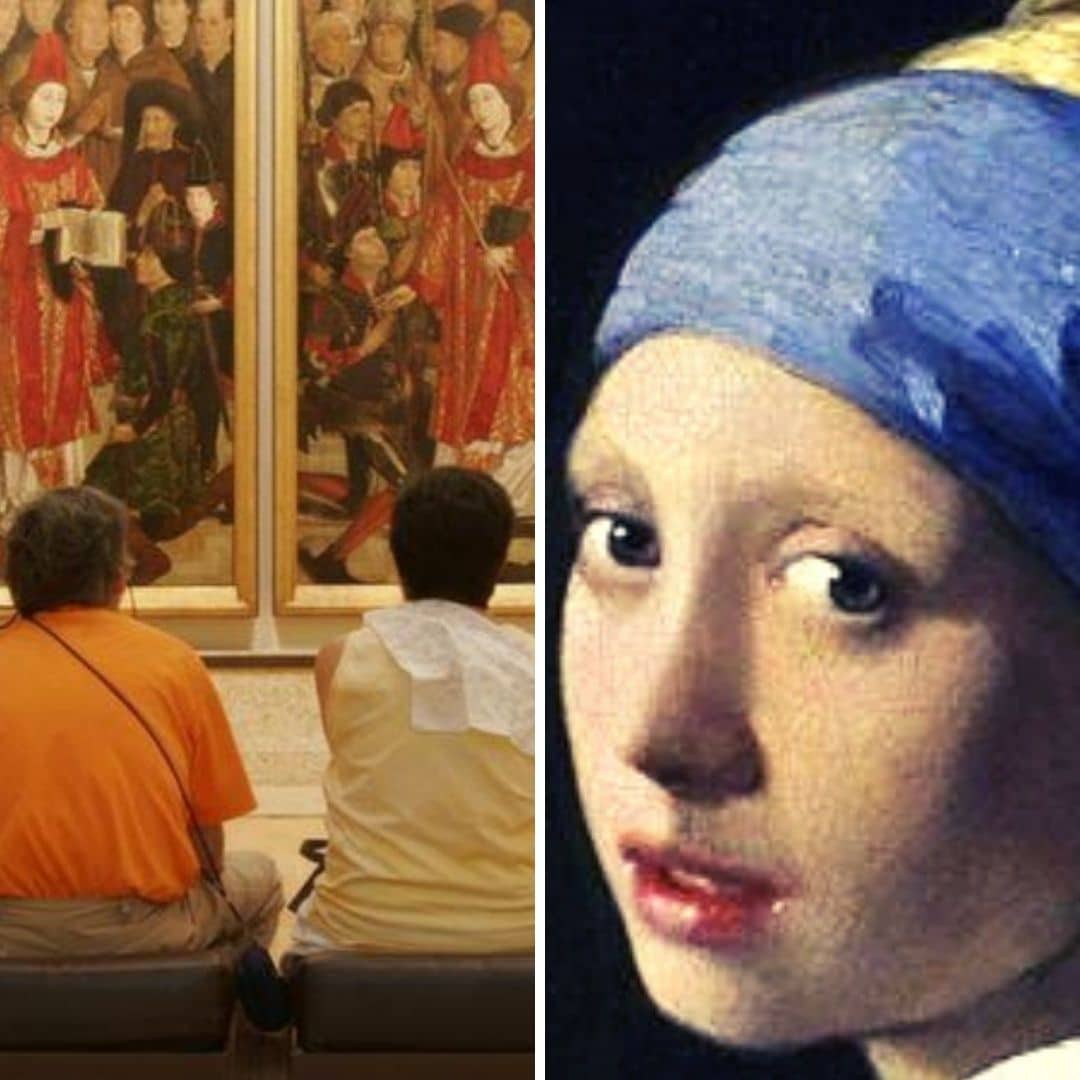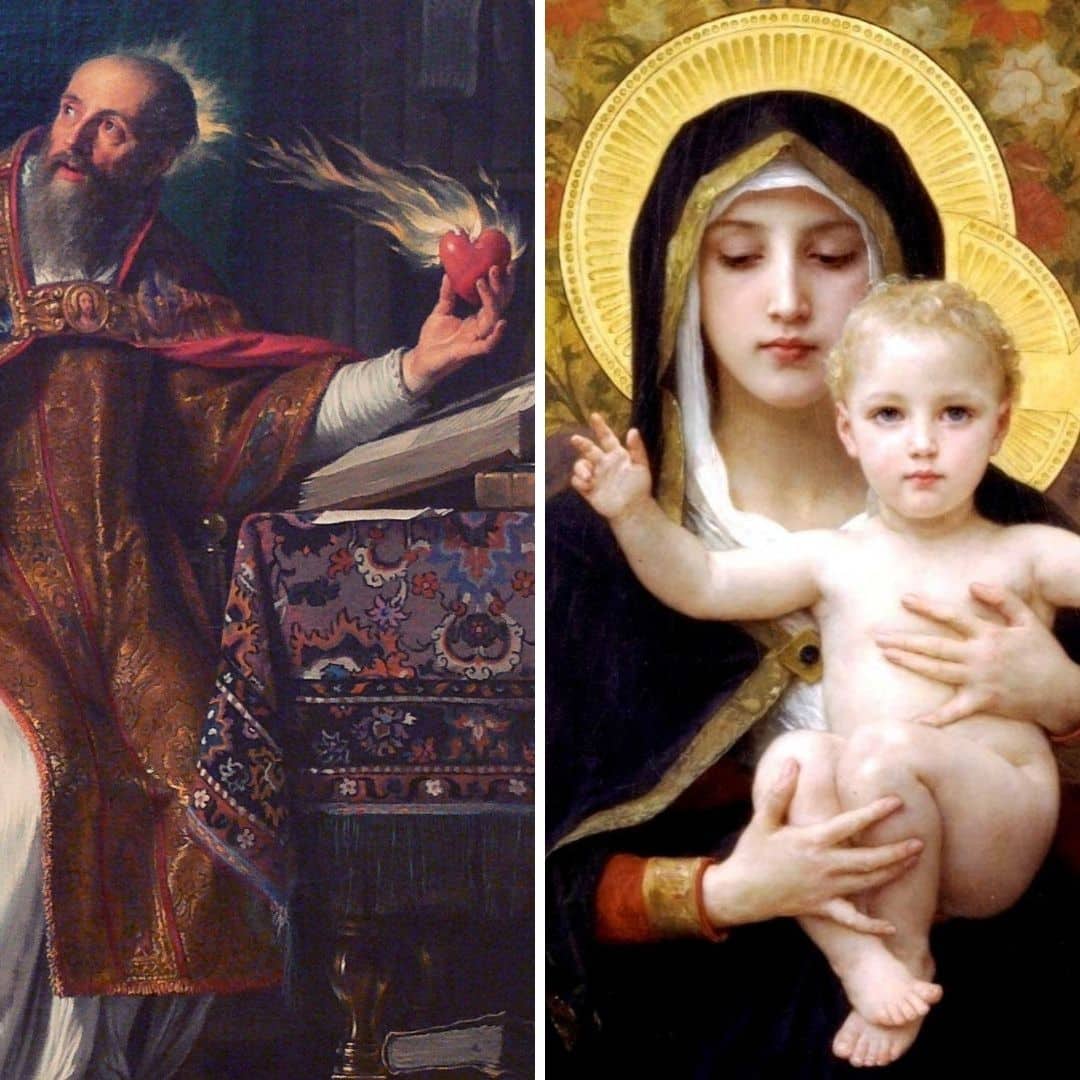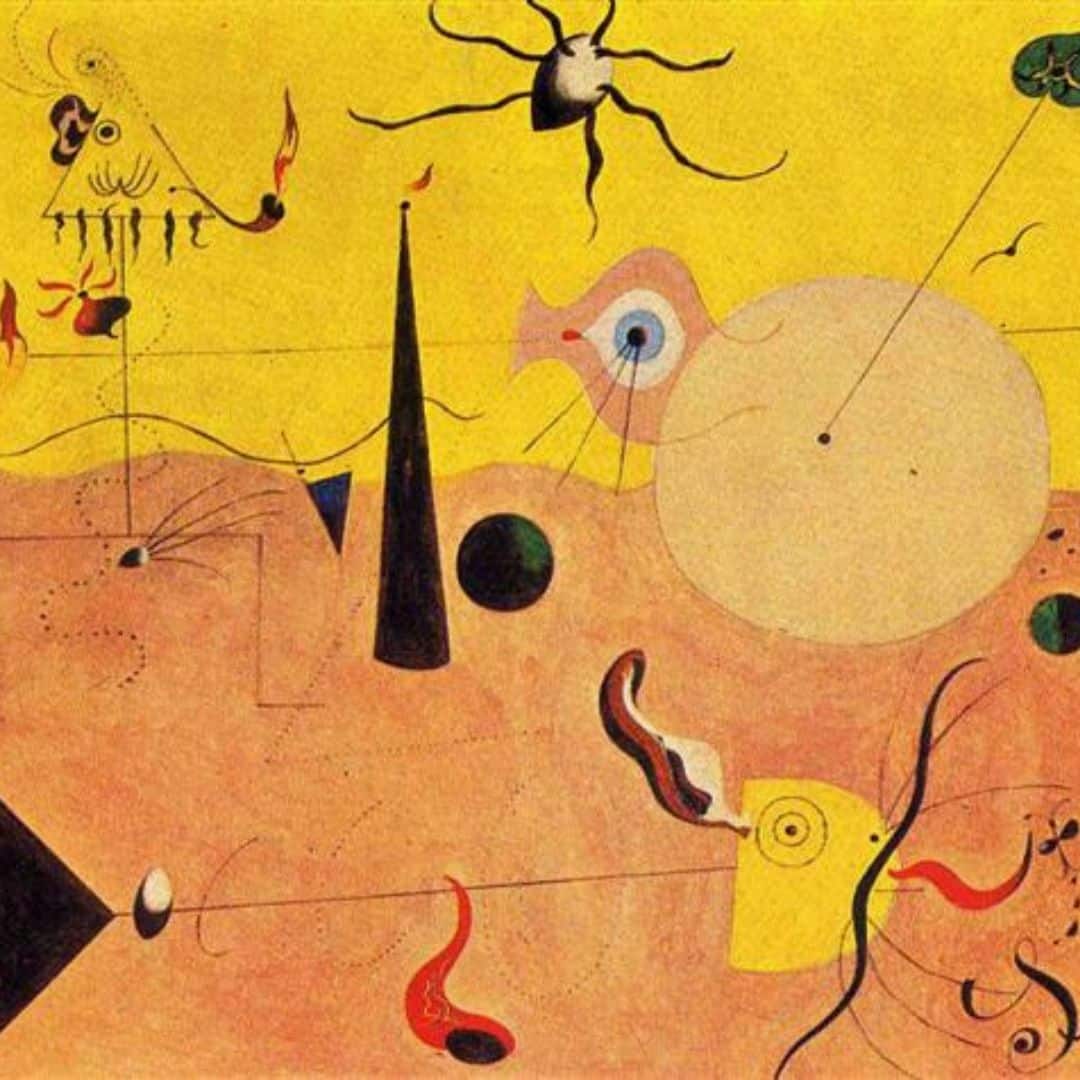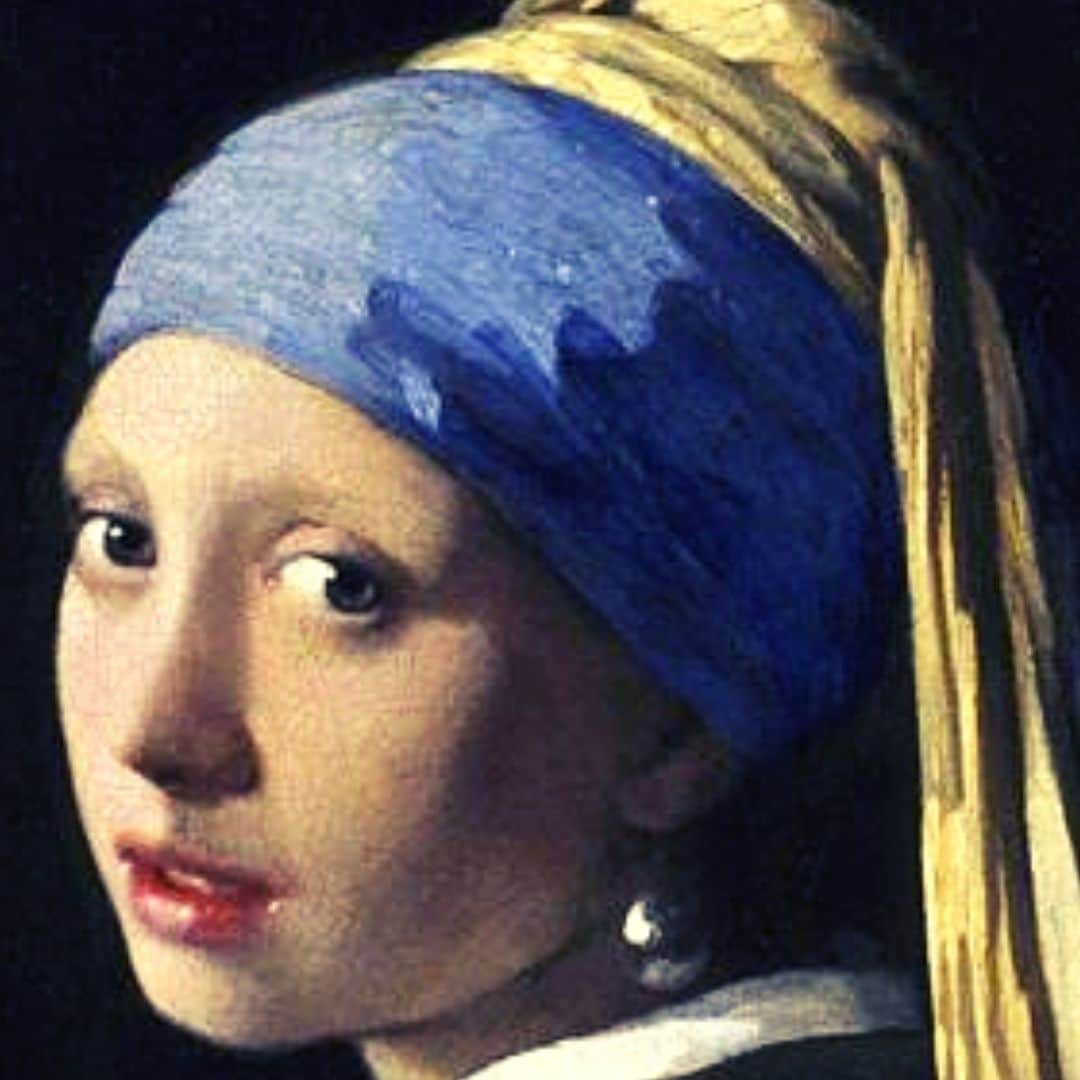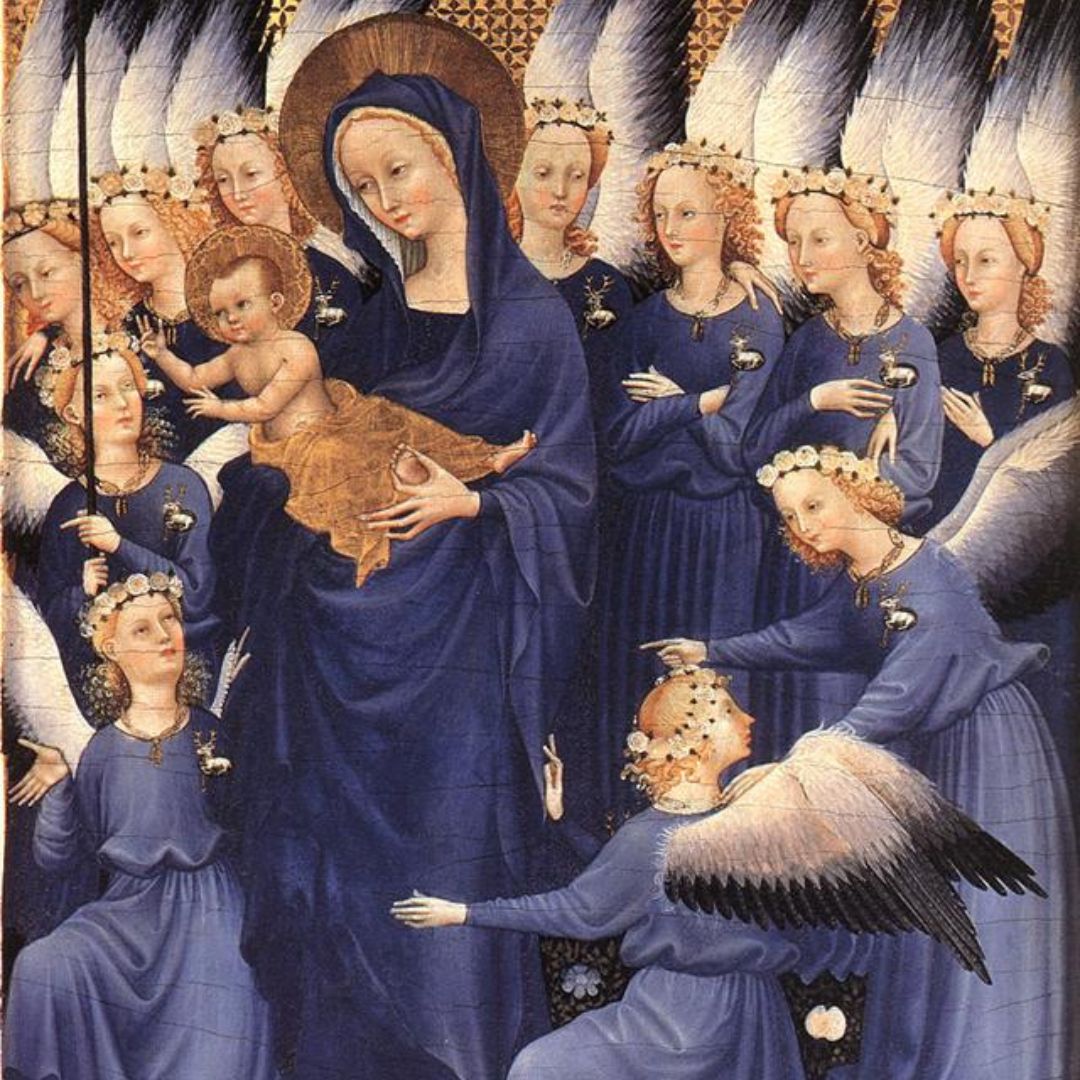Childhood has been a theme dealt with by many painters over time.
Impressionist artist Lilla Cabot Perry depicted this period in several of her works, and it is these that will be presented in this article.
Who was Lilla Cabot Perry
Lilla Cabot Perry (Lydia) was born in 1848 in Boston and her childhood, according to herself, was very memorable. From an early age, Lilla was interested in literature, music and drawing.
Her parents, who were very sensitive, allowed her access to libraries and museums, while her friends taught her some drawing techniques.
But time passed and Lilla grew up. In 1874, she married Thomas Perry, a professor of linguistics. Two years later, they had a daughter, Margareth, who would become the first girl depicted in Lilla’s paintings. In the following years, Lilla Cabot Perry would give birth to Edith (1880) and Alice (1884). The three daughters became her main models.
The Beginning
In Portrait of a Baby, from 1877, at the beginning of his career, Lilla emphasises a clear play between light and shadow to increase the painting’s emotional impact. We can hardly see the face of little Margaret, who is also completely oblivious to the viewer.
Almost ten years after this first portrait, Lilla began her formal art education, still in Boston, and her first work from this period was The Beginner. Margareth is once again the model for her mother. The girl looks directly at the viewer with a serious expression, and the play of light and shadow from her previous portrait can still be perceived here.
Moving to France and coming into contact with
Impressionism
In 1887, the Cabot Perry family moved to France. The painter continued her studies in Paris, not only attending classes, but also constantly visiting museums. It was at this time that she met Claude Monet, Camille Pissarro and Mary Cassatt, impressionist artists, with whom she soon established a deep friendship.
Lilla became interested in impressionism and began experimenting with this style. From then on, Lilla’s work focused heavily on the effects of colour and light, and she took the opportunity to portray her daughters in gardens and other outdoor places.
Lilla’s own technique has undergone a major transformation. Instead of the dramatic light effects of her early works, she now adopted a freer style, with less rigid brushstrokes. Over time, she definitely became an impressionist painter. We can see this in this portrait of Alice, her youngest daughter.
The influence of the Giverny Gardens and travelling
Lilla Cabot Perry spent some time in Giverny learning more about the Impressionist technique from Claude Monet. We can see how Giverny and Monet affected her style: her works vibrated with colour, revealing the artist totally absorbed in the spirit of Impressionism.
Lilla’s family travelled a lot, which helped diversify her work, including influences from oriental art, as her husband was invited to teach in Japan and Lilla learnt Japanese painting techniques.
In addition, the Impressionist movement itself was heavily influenced by Japanese art.
The Legacy of Lilla Cabot Perry
Lilla Cabot Perry continued to paint until her death in 1932, aged 88. She had an intense activity as a painter and her influence was very important for the recognition of Impressionism in the United States. She used all the lessons of other artists to develop her own unique style.
Her portraits of childhood are a reminder of her legacy: that the child within each of us should always be around, colourful and vibrant.



